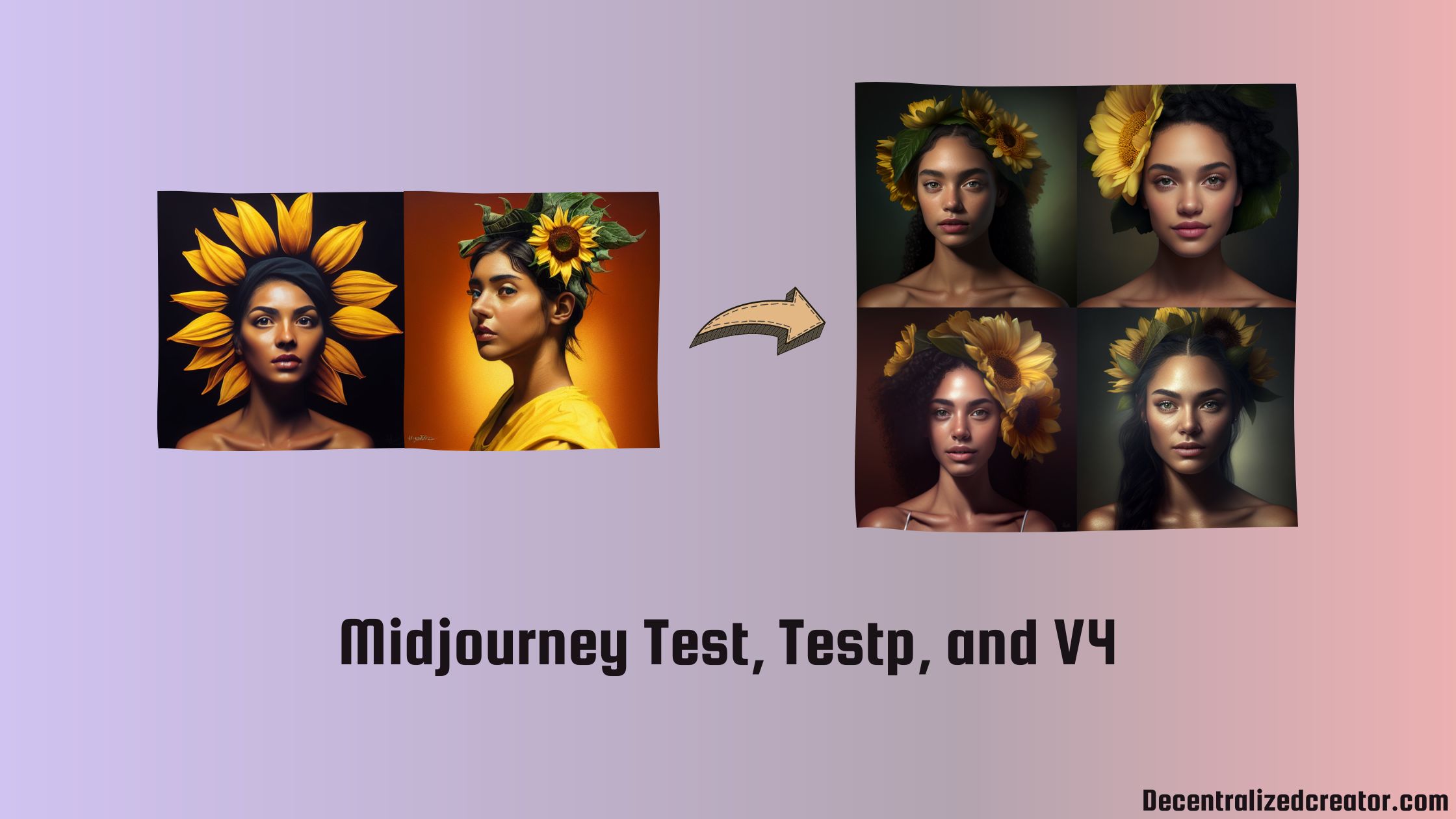Midjourney has experimental models called “–test” and “–testp” which were released prior to version v4. The “test” models aim to combine aesthetics and coherence into a single system.
In general, aesthetics refers to the appreciation of beauty. In the context of the artwork, aesthetics refers to elements, such as composition, color schemes, and lighting which make the art beautiful.
The coherency in the artwork refers to the degree of consistency and organization of the visual elements in an image. The good coherency of an image indicates that easily recognizable structure or pattern, where the visual elements are arranged in a logical and meaningful way that makes sense to the viewer.
In this article, you will learn what are test models, how to use them, and the difference between test models and the Midjourney version 4.
Table of Contents
Understanding –test and –testp
There is a common misunderstanding among Midjourney users who believe that “–test” and “–testp” are the same.
Let’s dive deep in.
While the “–test” model behaves as a general-purpose artistic model, the “–testp” is for photo-realism. This is why the letter “p” added to the “testp” model.
Midjourney v3:

Midjourney test:

Midjourney testp:

From the above examples, it is clearly visible that the color transition, subject composition, and coherency of the outcomes of “test models” are better than those of version 3.
Now that you know both test models are for different purposes, let’s move on to things you should know about these models.
Things You Should Know About “test” Models:
- While using “test” models, words at the beginning of your prompt makes more impact than the words at the back.
- Both the “test” models support the “–stylize” values from 1250 to 5000
- Both the “test” models have a maximum aspect ratio limit of either 3:2 or 2:3
- While other versions of Midjourney generates four initial grid images, both “test” models generate two initial images if the aspect ratio is 1:1 and one initial image if the aspect ratio is not 1:1
- Notably, the test models do not support multi-prompts and image prompts.
How to Use “–test” and “–testp” in your Prompts?
To use the “test” experimental models, you need to include “–test” and “–testp” at the end of your prompts.
Alternatively, you can toggle these “test” models by executing the “/settings” command. Once you have toggled any one of the test models, you can normally execute your prompts without adding any “–test” suffix.

Both “test” models can be used with the “–creative” parameter for more creativity and different compositions.
–test and –testp vs Midjourney v4
We can say that both “test” models are the stepping stones for Midjourney v4. Because Midjourney v4 is built upon the “test” and “testp” models.
However, prompting with v4 is different and requires experimenting with new prompting tricks.

The above image was created with Midjourney v4. I have used the same prompt for this one too.
If we compared the outcomes of “test”, “testp”, and “v4”, the result of v4 is way better than the others.
–test and –testp and Remaster
In addition to “test” and “testp”, there is a feature called “remaster“. The remaster combines the “–test” and “–creative” parameters to create images that are very coherent in nature.
Conversely, if you use the “–v3” parameter on “–testp” images, it results in a “demaster.”
Conclusion
Midjourney’s “–test” and “–testp” models were released prior to version v4 and are experimental models with different purposes.
“–test” aims to combine aesthetics and coherence while “–testp” is for photo-realism. Using the test models with the right prompts can lead to better color transition, subject composition, and coherency.
Both models have their limitations and do not support multi-prompts and image prompts. However, they can be used with the “–creative” parameter for more creativity and different compositions.
Midjourney v4 builds upon the test models, but prompting with v4 requires experimenting with new tricks.
The remaster feature combines “–test” and “–creative” parameters to create very coherent images, while using the “–v3” parameter on “–testp” images results in a “demaster”.
It’s important to note that since the “–test” and “–testp” models are experimental, their functionality is subject to change.
